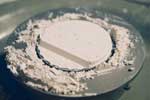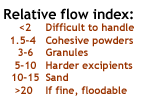What Exactly is Powder Flowability?
OK, so you have been handling powders for over a decade, and you have had your share of powders with excellent flowability, and those you would rather forget about. Powder flow effects solids dosage operations through material handling problems, segregation, tablet uniformity, and fill control. But when we say a powder has poor flowability, what exactly are we really saying?
Recall for a moment quaint farm photographs of grain silos and contrast them to a storage vessel for say gasoline or chemical solvents. What is immediately obvious? Yes, the diameter.
For fluids, pressure scales with height, so vessels are wide but kept squat. For powders, pressure scales with diameter…so the silos are kept narrow. In fact, making them taller does not significantly alter the pressure at the bottom for sufficient height.
The vertical pressure in the powder develops a normal radial pressure at the walls, and this pressure develops a wall friction stress. At sufficient depth, this wall shear stress actually holds the weight of any additional powder, meaning there is no further increase in downward pressure. Note that none of these pressures are isotropic as they would be for most fluids.
Now take yourself to those sunny days walking along the beach, scattered with sandcastles. Consider packing sand in a cup to make more towers for your castle.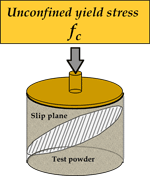
It is immediately obvious from looking at your tower that powders ARE NOT fluids, as your tower does not collapse. Bulk powders are solids. Powders can withstand pressure and stress without flowing (or more correctly, yielding), in contrast with most liquids.
If you pack your sand tighter, your tower will be stronger. Powders have a yield strength – just as a solid – which is a function of the history of compaction stress, as well as the current applied stress. This is a powder’s flow function. Bulk powders DO NOT have a viscosity. Simply forget most of the things you were taught about fluids, since they rarely apply to powders.
Lets’ think about measurements. You may have used torque rheometers to measure fluid viscosity. Could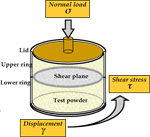 this work for a powder? There are some key requirements for rheometers: the fluid must not slip on the torque surfaces, the strain-rate field must be defined and the material functions of fluid must be known. Otherwise, you cannot determine a viscosity, and can only measure torque for an ill-defined stress field. This is useful for telling you the torque required to shear this fluid IN THIS VESSEL and FOR THIS GEOMETRY. It tells you nothing about shear forces or flow in an actual process. Furthermore, attempting to extend traditional rheometric testing to bulk solids simply doesn’t work – since bulk powders are not fluids.
this work for a powder? There are some key requirements for rheometers: the fluid must not slip on the torque surfaces, the strain-rate field must be defined and the material functions of fluid must be known. Otherwise, you cannot determine a viscosity, and can only measure torque for an ill-defined stress field. This is useful for telling you the torque required to shear this fluid IN THIS VESSEL and FOR THIS GEOMETRY. It tells you nothing about shear forces or flow in an actual process. Furthermore, attempting to extend traditional rheometric testing to bulk solids simply doesn’t work – since bulk powders are not fluids.
Bulk powders are solids. They exhibit anisotropic stress, elastic deformation & yield strength. They DO NOT flow in the sense of a fluid. They fail along slip planes, often don’t exhibit shear gradients, can slip on wall surfaces, and are less sensitive to strain rate. Their flow properties are measured by shear cells, developed from geotechnical soil mechanics.
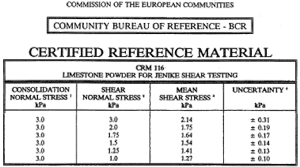
Shear cells determine simple flow indices, which are measures of the forces required to initiate flow, 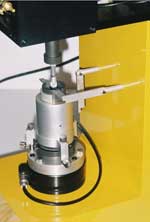 defined as powder failure, based on measurements of cohesive strength, powder friction, and wall friction. This information is extremely useful for bin design, minimization of caking & segregation, and processes such as filling operations, roll pressing, tabletting, and encapsulation.
defined as powder failure, based on measurements of cohesive strength, powder friction, and wall friction. This information is extremely useful for bin design, minimization of caking & segregation, and processes such as filling operations, roll pressing, tabletting, and encapsulation.

